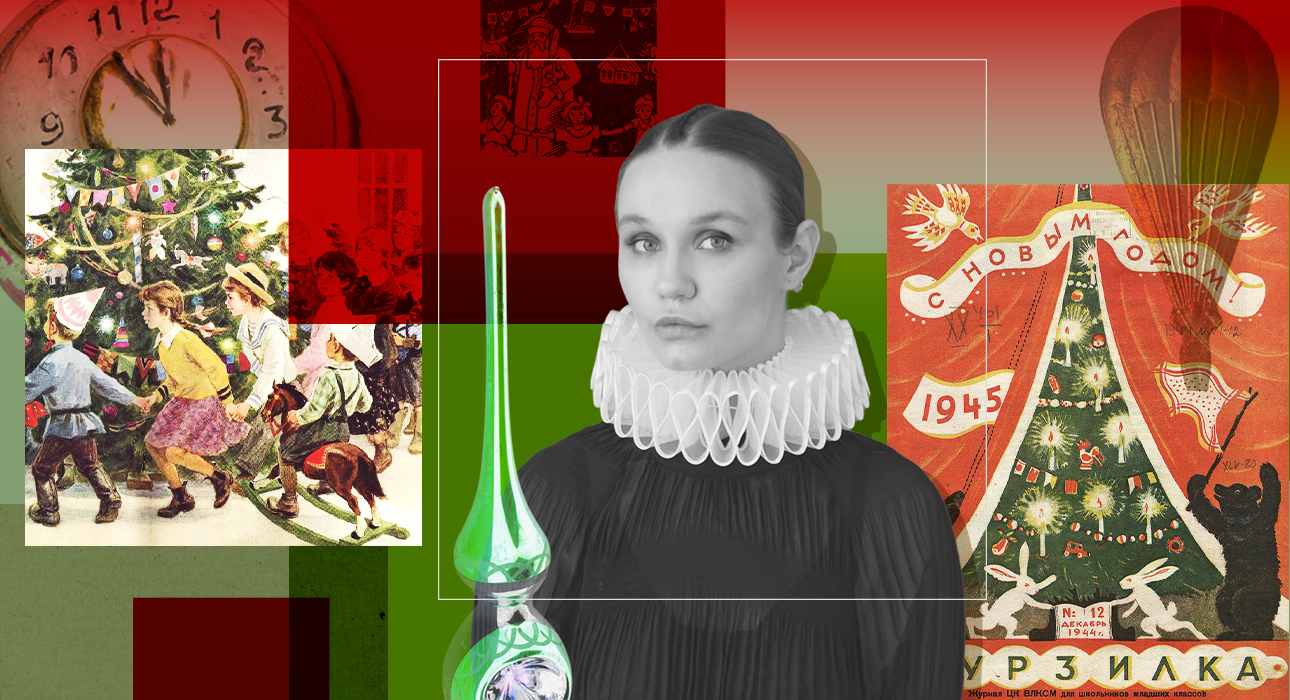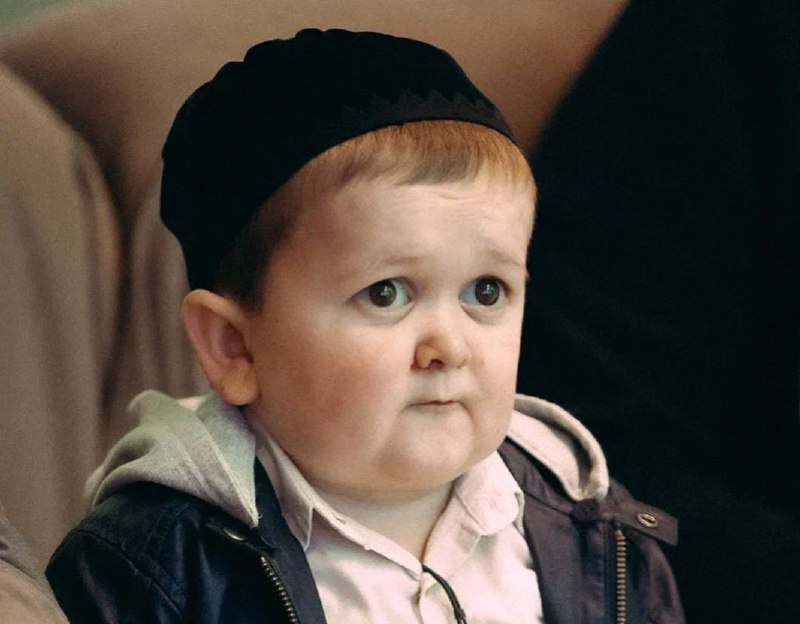About a year ago the Internet was blown up with a wave of posts about how Soviet Christmas tree decorations could be found on a well-known marketplace. It would seem that there is nothing unusual. But there is one thing: the cost of some copies reached almost a million rubles.
Shock hasn’t let me go for a year, so it’s time to figure out how it happened. Let’s put everything on shelves or hang it on branches to preserve the New Year’s mood. We remember the history of Soviet toys and even how they wanted to steal the New Year from us.

The beginning of the 20th century was a period of decline of the Russian Empire, which brought with it the old traditions and luxury of pre-revolutionary Christmas. A period of different values was coming. After the revolution, the new government declared war on religion, which was also reflected in the history of Christmas celebrations.
The first step towards changes was taken in January 1918 with the adoption of the Decree on the introduction of the Western European calendar in the Russian Republic. Before that, the country lived according to the Julian calendar, so today we celebrate Christmas on January 7, and hence the tradition of celebrating the old New Year, that is, according to the old calendar.
In 1922, a large-scale campaign against Christmas began. At first, the authorities tried to replace the Orthodox holiday with the Soviet “Komsvyatki”, which was proposed to be celebrated for several days with the participation of the same Christmas tree. But the decorations on it were already Soviet.
-
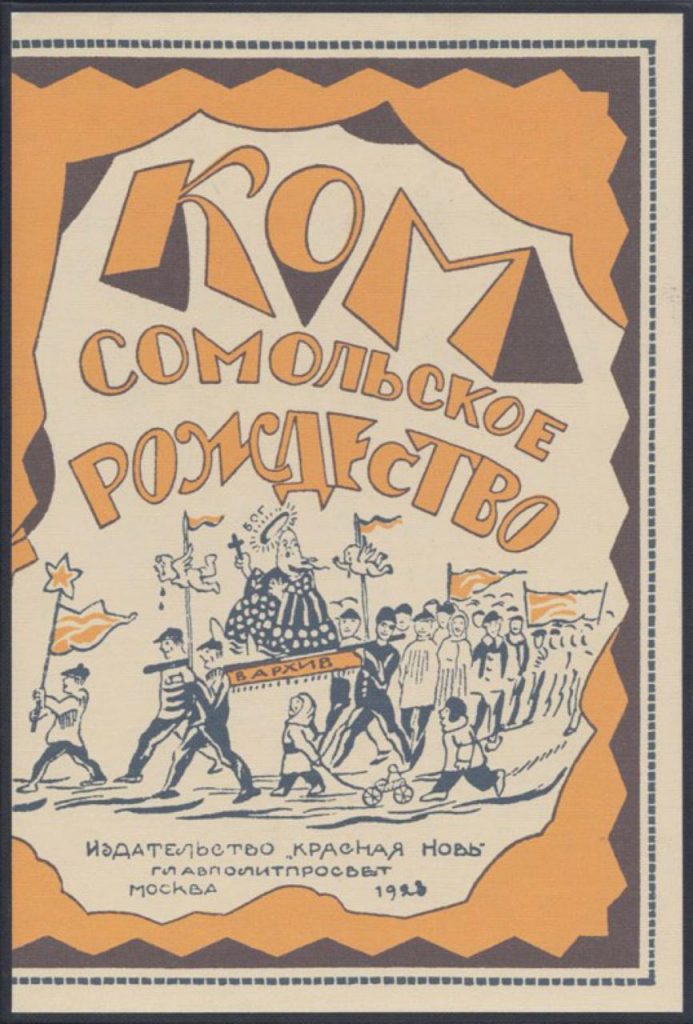
Cover of the collection “Komsomol Christmas”. 1923 -
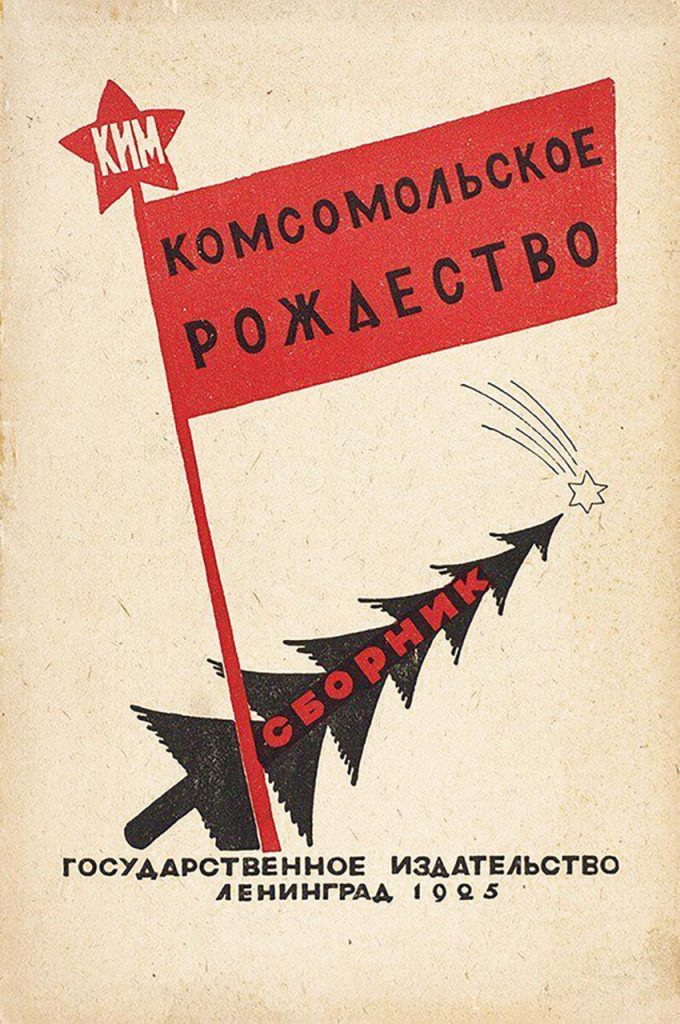
Cover of the collection “Komsomol Christmas in the Clubs”. 1925
For example, a spruce might be placed inside a scarecrow symbolizing global capitalist evil. And on its branches were dolls of enemies pierced with chips or bayonets. Such “Christmas tree decorations” were the first attempts to create new holiday symbols, but they did not create much joy. But discrediting Christmas through “comsvyatki” turned out to be ineffective.
Since 1925, large-scale persecution of religion began, and in 1929 Christmas was finally banned. It was declared injurious to health, associated with drunkenness and waste. And in 1931 they decided to press the environmental agenda, and this argument turned out to be really effective. Forest protection has become an important reason why children and young people abandon the usual Christmas tree. The fight against the holiday symbol is finally starting to yield results. But suddenly, suddenly, it all ended. One day the tree was returned, persecution began, everyone took out old toys from the trash cans, the tree was allowed.
-
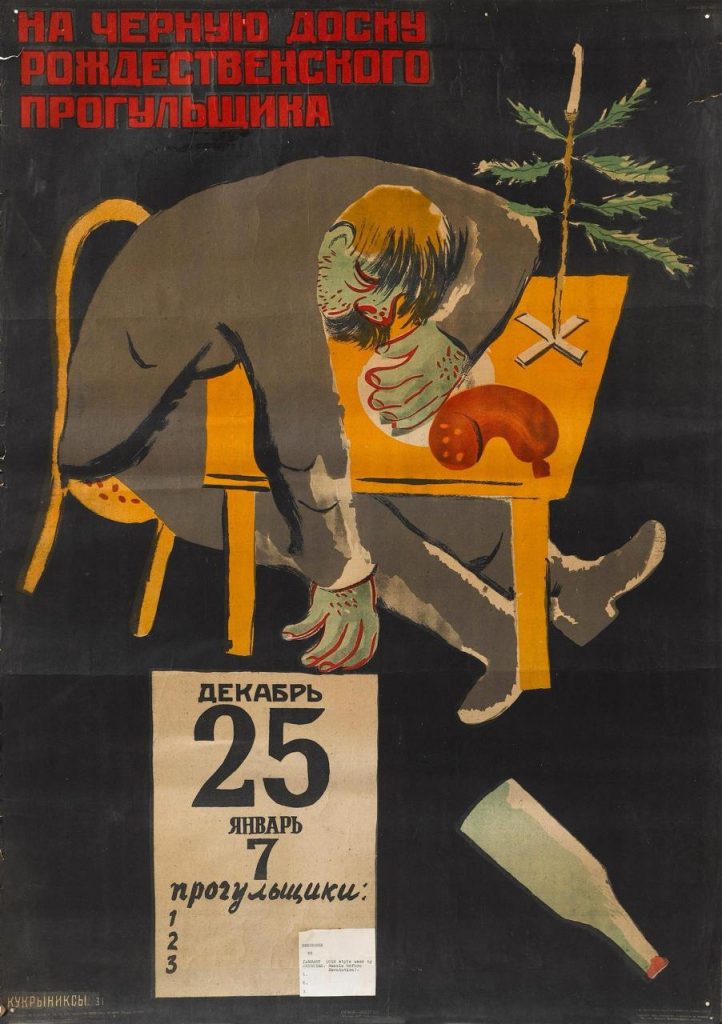
Propaganda poster against Christmas -

ChiZh, 1931, Issue 12
Meanwhile, on December 28, 1935, the newspaper Pravda published a letter from Pavel Petrovich Postyshev, Secretary of the Central Committee of the All-Union Communist Party of Bolsheviks, in which he suggested that Stalin arrange a Christmas tree not for Christmas, but for children. , as before, but for the New Year. There were only a few days left until the holiday and preparation seemed almost impossible. Factories and stores were closed, toy production was stopped, and the masters who made Christmas tree decorations either went underground or changed professions.
The Detsky Mir store, which was open late from December 28 to January 2, and Mosoblsteklokeramsoyuz, which quickly launched the production of toys as soon as possible, came to the rescue. Still, that year, people decorated their Christmas trees with what they had on hand: curly gingerbread cookies, marzipan candies, and homemade ornaments.
In just a few days, all prohibitions were lifted as if they had never existed. People rushed to buy Christmas trees en masse, and already in 1936 they became an obligatory attribute of children’s New Year holidays. But Christmas tree decorations have changed radically since then, and there are reasons for this.

It seemed impossible to use the old imperial toys because they did not fit the new ideals. The Soviet government quickly realized that it was through holidays and their attributes that important ideological values could be instilled in young citizens.
During the imperial period, toy production was carried out in small workshops and stores for a narrow circle of buyers. But the new country required a completely different scale. Christmas tree decorations were now supposed to appear in every Soviet apartment, not just in the homes of the rich. For this, not workshops were needed, but full-fledged factories capable of mass production.
Already in 1936, the production of glass Christmas tree decorations began, which included the main symbols of the USSR and the country’s achievements. Among them are hammer and sickle, five-pointed stars, balloons, airships, airplanes and even balloons with images of Lenin, Stalin and portraits of Politburo members.
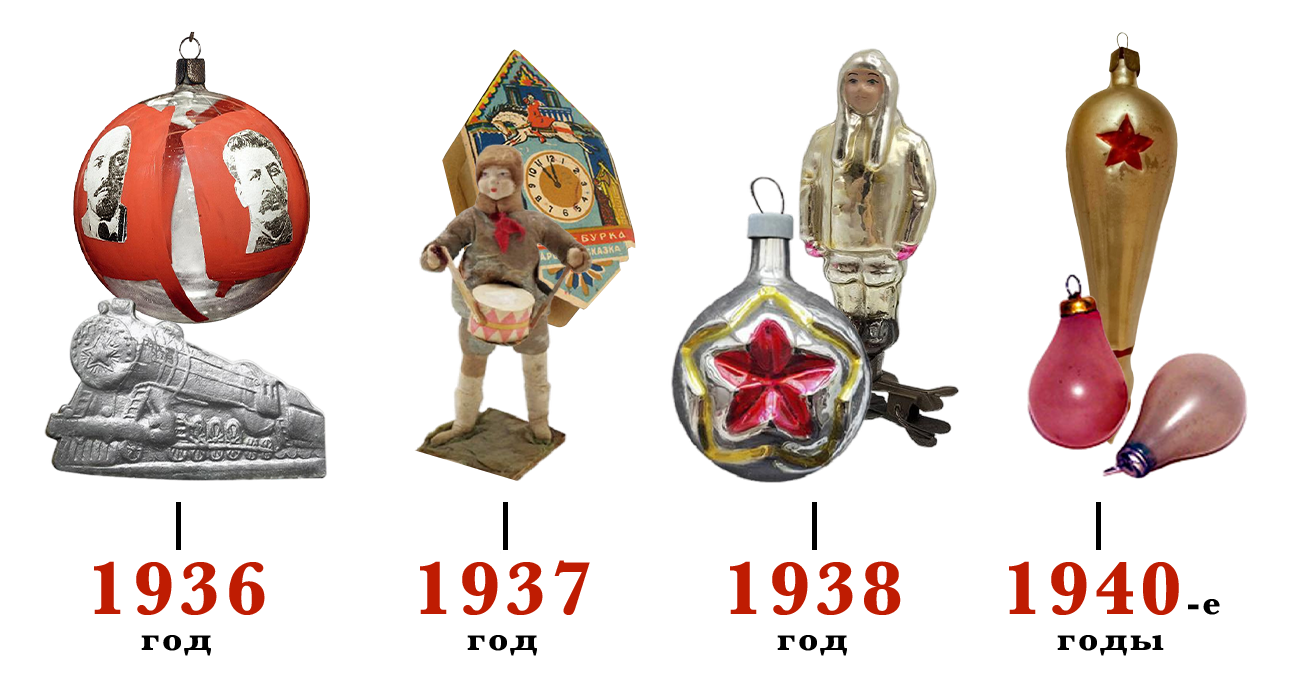
After the costs were recalculated in 1937, it was decided to focus on cotton toys. They turned out to be not only cheaper, but also more durable, and thanks to production technologies it was possible to create elegant and complex products.
Thematic Christmas tree decorations have been on sale since 1938:
“Red Army” – with figures of infantrymen, pilots, police officers, ships, submarines and cruisers. Toys related to the exploration of the North Pole were added to this set: polar bears, polar explorers;
To sports, to children, to the new Soviet infrastructure – cars, houses;
Agricultural-themed toys, including corn, appeared on Christmas trees even before Khrushchev, but became especially popular during his time.
Paper wreaths were especially popular in the 1940s and 1950s. Simple to produce and affordable, they helped effectively fill Christmas trees in times of scarcity. During the war, when all resources went to the front, toys were made from colored burnt light bulbs, glass medical flasks and light bulbs. In the first post-war years, cardboard became the main material for decoration.
Each period made its own contribution to the history of Soviet Christmas tree decorations, reflecting its own ideals, cultural guidelines and possibilities of the time.
Following mass production in the 1950s and 1960s, so-called “home toys” appeared on Christmas trees: teapots, alarm clocks, jugs, samovars and even miniature chandeliers. These years were also marked by ideological motifs connected with the conquest of space. Toys appeared in the form of astronauts, comets, satellites and rockets, which became symbols of the era.
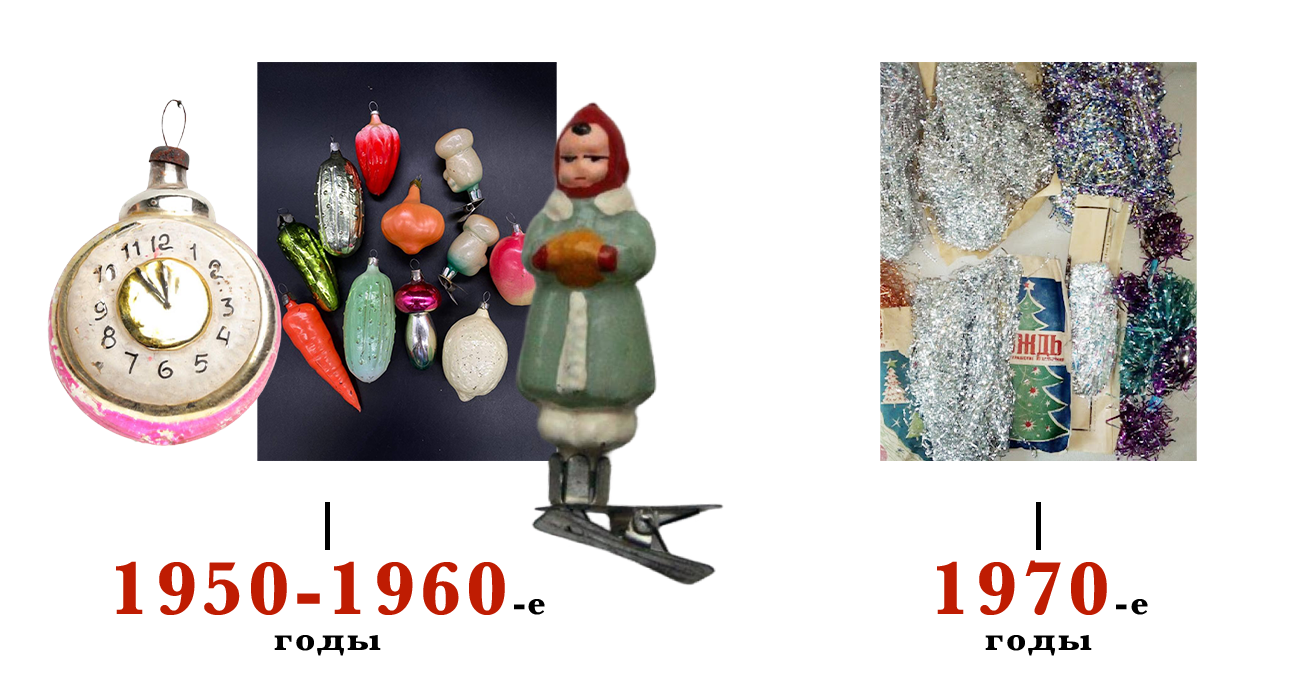
The main innovations of the 1950s were clothespin toys, as well as clocks inspired by Eldar Ryazanov’s film Carnival Night (1956). The sixties brought toys in new shapes and bold colours. Icicles, cones, glass balls with symmetrical recesses resembling space satellites, and plastic toys appeared on Christmas trees. The color palette has become brighter with elements of imitation snow.

However, in the 1970s, a noticeable decline began in both the variety and quality of Christmas tree decorations. Variety was replaced by “silver rain”, which was hung in abundance on Christmas trees, compensating for the lack of toys. By the 1980s, toy production became easier. Simple balls, bells and bows, often in the same color scheme, began to prevail on Christmas trees.
However, Soviet traditions of decorating a Christmas tree have been preserved in families for a long time. And if after reading this material you want to invest in vintage Christmas tree decorations, pay attention to the themed sets of the 1950s and 1960s. Their value lies in preserving the complete set, which can become a real find for collectors.
Source: People Talk
Errol Villanueva is an author and lifestyle journalist who writes for The Fashion Vibes. With a passion for exploring the latest trends in fashion, food, travel, and wellness, Errol’s articles are a must-read for anyone interested in living a stylish and fulfilling life.

